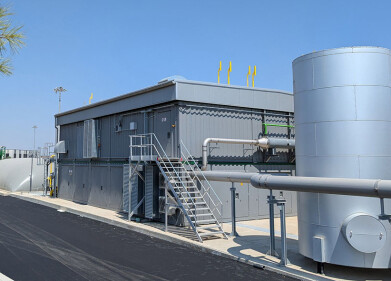Air clean up
How Does Pollution Affect Thunderclouds?
Oct 13 2018
The airborne particles caused by pollution have a different effect on thunderclouds than smoke caused by fires, a new study has found. According to scientists from NASA, smoky air will inhibit the formation of clouds, while pollution will encourage their growth - unless the pollution is at excessively high levels, in which case it too will suppress cloud formation.
That’s because the aerosols present in both particle formations react differently with water vapour depending upon their colour, size and location. As such, the study provides valuable insight into how manmade pollution can affect local weather patterns and help scientists to better understand how precipitation is affected by different kinds of aerosols.
Understanding cloud formation
The scientific community has long been aware that clouds generally do not form without some form of aerosols in the air, since water vapour finds condensation difficult with no aerosols to cling to. However, there are many different kinds of aerosol, including those caused by manmade pollution such as sulphates and nitrates (which authorities have been attempting to clamp down on through industrial regulation and methods of cleaning up traffic-based contamination), as well as volcanic ash, smoke caused by fires, pollen and sea salt.
In the new study, the researchers used data collected by two observational NASA satellites - CloudSat and the Cloud-Aerosol Lidar and Infrared Pathfinder Satellite Observation (CALIPSO) - to assess the various effects that different aerosols have on clouds. The former satellite monitors cloud heights and locations, while the latter takes readings of its aerosol composition. Analysing these results allowed the NASA team to gain some new insights into the process.
Smoke and mirrors
Their analysis of five years of data from the satellites revealed that smoke has a restraining effect on cloud formation. This is because when heat is emitted from the ground, it’s absorbed by smoke particles in the air, which in turn raises the temperature of the ambient air. At the same time, they also obscure rays of the sun from falling on the Earth, which reduces the ground temperature. This reduced discrepancy between the temperature on land and in the air makes it difficult for clouds to form, since moisture on the ground does not evaporate as readily when the ground is cooler.
On the other hand, the aerosols caused by manmade pollution affect clouds differently. When these are found in heavy concentrations, they have much the same effect as smoke, since the sheer number of particles in the air obscure sunlight from reaching the ground and thus minimise the difference between air and ground temperature as before. However, when the concentrations are less extreme, they add more aerosols for water vapour to bond with, but don’t absorb nearly as much heat as smoke particles. In this way, they encourage the growth of clouds.
Further details of the study can be found on the Jet Propulsion Laboratory section of the NASA website.
Events
Aug 24 2025 Stockholm, Sweden and online
Aug 27 2025 Busan, South Korea
Sep 02 2025 Mexico City, Mexico
Sep 02 2025 Mexico City, Mexico
Sep 09 2025 Moscow, Russia











